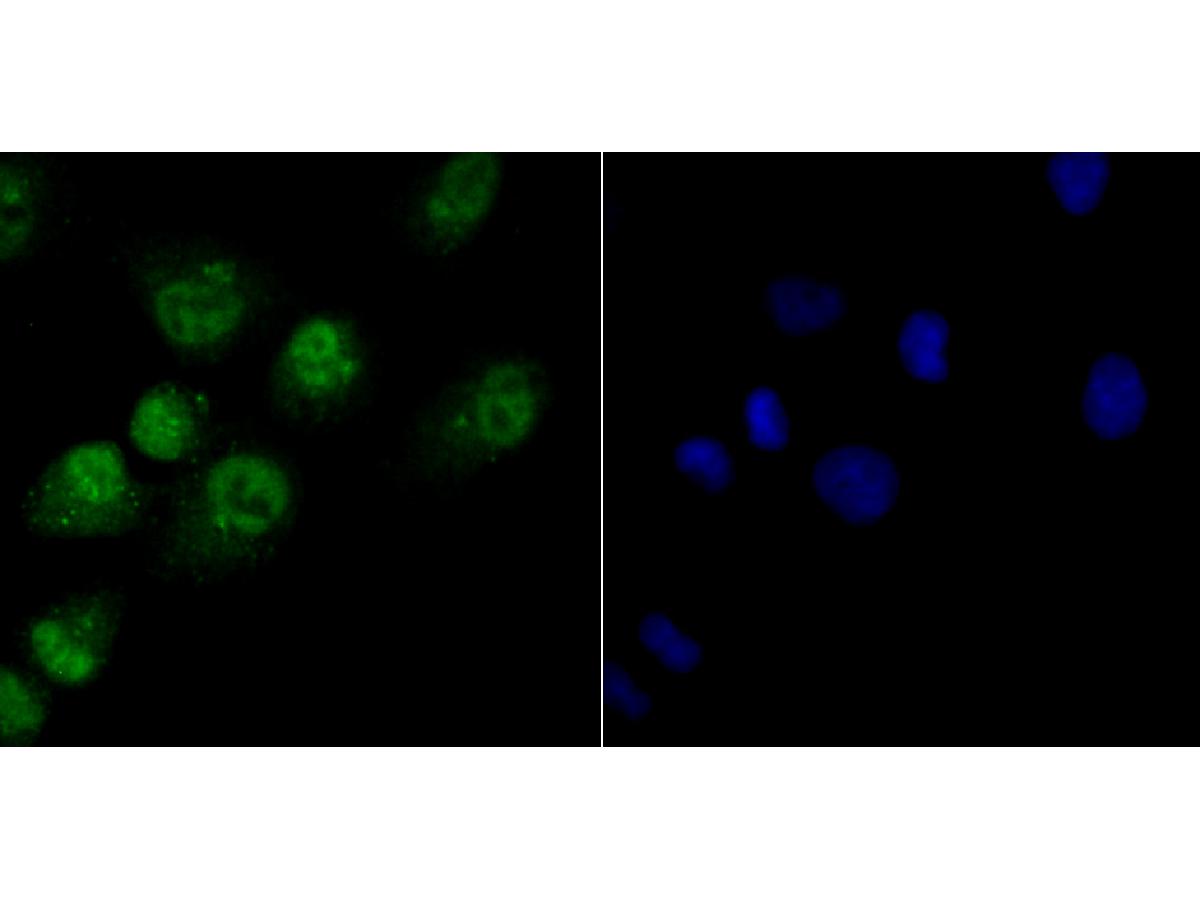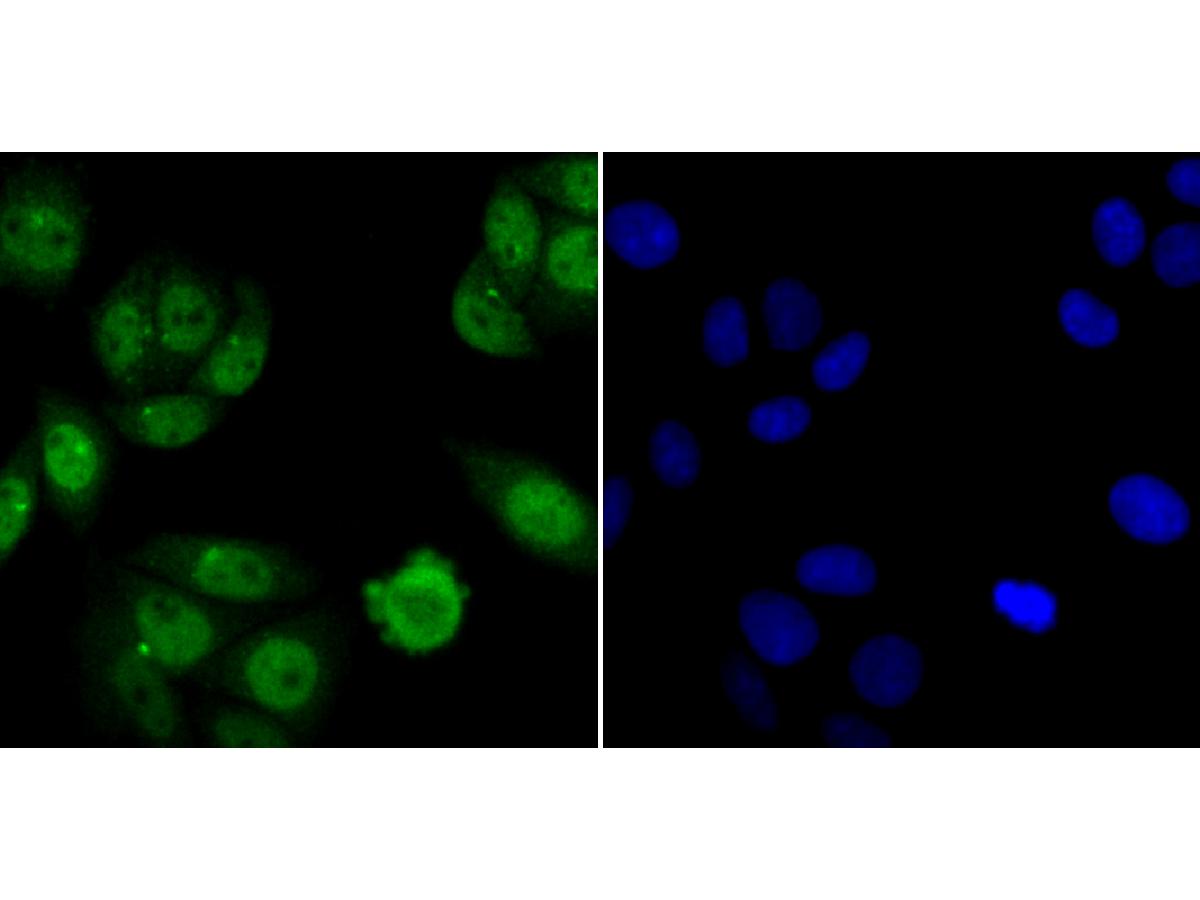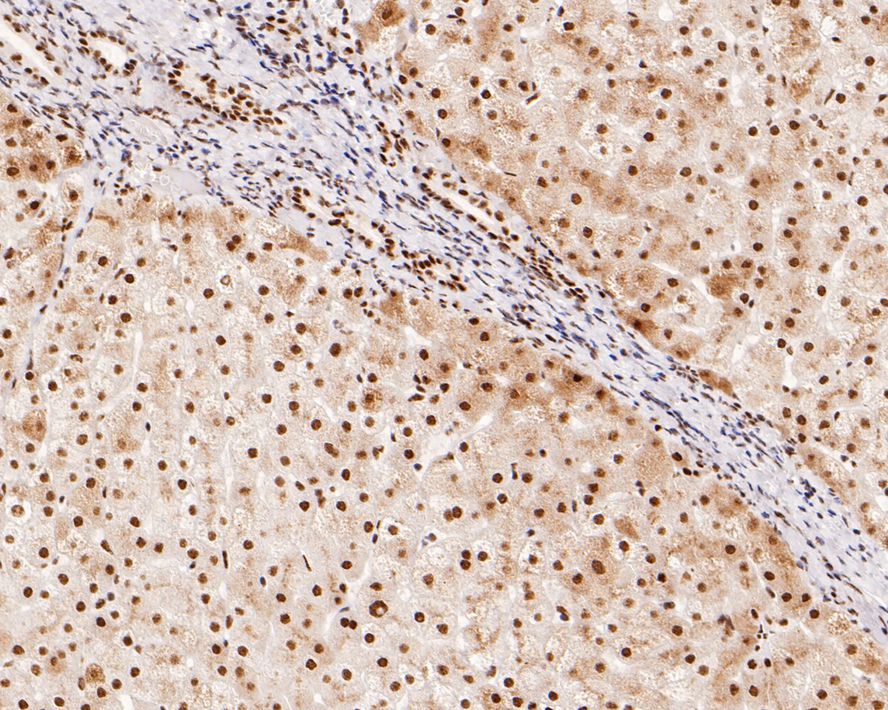Nfic Rabbit Polyclonal Antibody

cat.: ER1803-46
| Product Type: | Rabbit polyclonal IgG, primary antibodies |
|---|---|
| Species reactivity: | Human |
| Applications: | WB, IF-Cell, IHC-P, FC |
| Clonality: | Polyclonal |
| Form: | Liquid |
| Storage condition: | Store at +4℃ after thawing. Aliquot store at -20℃. Avoid repeated freeze / thaw cycles. |
| Storage buffer: | 1*PBS (pH7.4), 0.2% BSA, 50% Glycerol. Preservative: 0.05% Sodium Azide. |
| Concentration: | 1ug/ul |
| Purification: | Immunogen affinity purified. |
| Molecular weight: | Predicted band size: 56 kDa |
| Isotype: | IgG |
| Immunogen: | Synthetic peptide within mouse Nfic aa 390-439 / 439. |
| Positive control: | A549 cell lysate, SiHa cell lysate, A431, A549, SiHa, human liver tissue, human skin tissue. |
| Subcellular location: | Nucleus. |
| Recommended Dilutions:
WB IF-Cell IHC-P FC |
1:500 1:50-1:200 1:200-1:1,000 1:50-1:100 |
| Uniprot #: | SwissProt: P08651 Human |
| Alternative names: | 1110019L22Rik 1500041O16Rik AA589446 AI746521 CAAT box transcription factor CCAAT binding transcription factor CCAAT box binding transcription factor CCAAT-box-binding transcription factor CNFI C CTF CTF5 MGC137374 MGC20153 NF I NF I/C NF-I/C NF1 C NF1-C NF1C NFI NFI-C NFI/C NFIC NFIC_HUMAN Nuclear factor 1 Nuclear factor 1 C type Nuclear factor 1 C-type Nuclear factor 1/C Nuclear factor I/C (CCAAT binding transcription factor) Nuclear factor I/C TGGCA binding protein TGGCA-binding protein Transcription factor NFIC |
Images

|
Fig1:
Western blot analysis of Nfic on different lysates with Rabbit anti-Nfic antibody (ER1803-46) at 1/500 dilution. Lane 1: A549 cell lysate Lane 2: SiHa cell lysate Lysates/proteins at 10 µg/Lane. Predicted band size: 56 kDa Observed band size: 56 kDa Exposure time: 2 minutes; 10% SDS-PAGE gel. Proteins were transferred to a PVDF membrane and blocked with 5% NFDM/TBST for 1 hour at room temperature. The primary antibody (ER1803-46) at 1/500 dilution was used in 5% NFDM/TBST at room temperature for 2 hours. Goat Anti-Rabbit IgG - HRP Secondary Antibody (HA1001) at 1:300,000 dilution was used for 1 hour at room temperature. |

|
Fig2: ICC staining Nfic in A431 cells (green). The nuclear counter stain is DAPI (blue). Cells were fixed in paraformaldehyde, permeabilised with 0.25% Triton X100/PBS. |

|
Fig3: ICC staining Nfic in A549 cells (green). The nuclear counter stain is DAPI (blue). Cells were fixed in paraformaldehyde, permeabilised with 0.25% Triton X100/PBS. |

|
Fig4: ICC staining Nfic in SiHa cells (green). The nuclear counter stain is DAPI (blue). Cells were fixed in paraformaldehyde, permeabilised with 0.25% Triton X100/PBS. |

|
Fig5:
Immunohistochemical analysis of paraffin-embedded human liver tissue with Rabbit anti-Nfic antibody (ER1803-46) at 1/1,000 dilution. The section was pre-treated using heat mediated antigen retrieval with sodium citrate buffer (pH 6.0) for 2 minutes. The tissues were blocked in 1% BSA for 20 minutes at room temperature, washed with ddH2O and PBS, and then probed with the primary antibody (ER1803-46) at 1/1,000 dilution for 1 hour at room temperature. The detection was performed using an HRP conjugated compact polymer system. DAB was used as the chromogen. Tissues were counterstained with hematoxylin and mounted with DPX. |

|
Fig6: Flow cytometric analysis of SiHa cells with Nfic antibody at 1/100 dilution (purple) compared with an unlabelled control (cells without incubation with primary antibody; yellow). Alexa Fluor 488-conjugated goat anti-rabbit IgG was used as the secondary antibody. |

|
Fig7:
Immunohistochemical analysis of paraffin-embedded human skin tissue with Rabbit anti-Nfic antibody (ER1803-46) at 1/200 dilution. The section was pre-treated using heat mediated antigen retrieval with sodium citrate buffer (pH 6.0) for 2 minutes. The tissues were blocked in 1% BSA for 20 minutes at room temperature, washed with ddH2O and PBS, and then probed with the primary antibody (ER1803-46) at 1/200 dilution for 1 hour at room temperature. The detection was performed using an HRP conjugated compact polymer system. DAB was used as the chromogen. Tissues were counterstained with hematoxylin and mounted with DPX. |
Note: All products are “FOR RESEARCH USE ONLY AND ARE NOT INTENDED FOR DIAGNOSTIC OR THERAPEUTIC USE”.